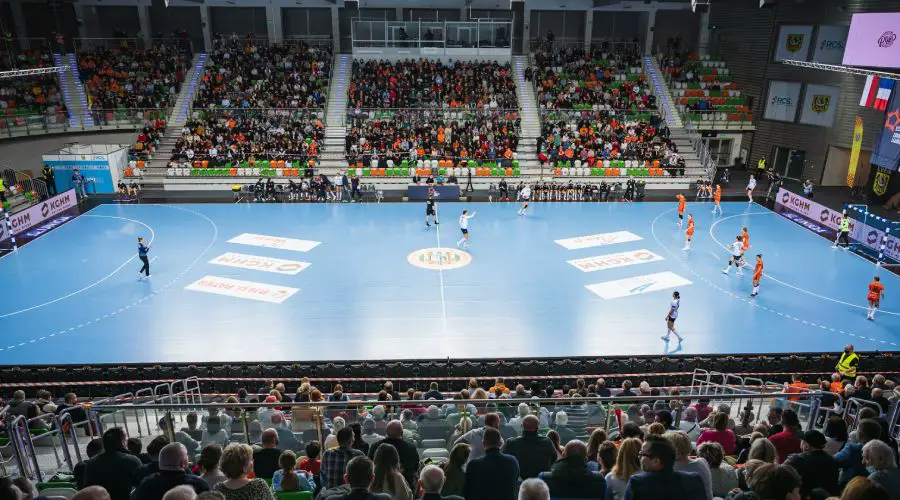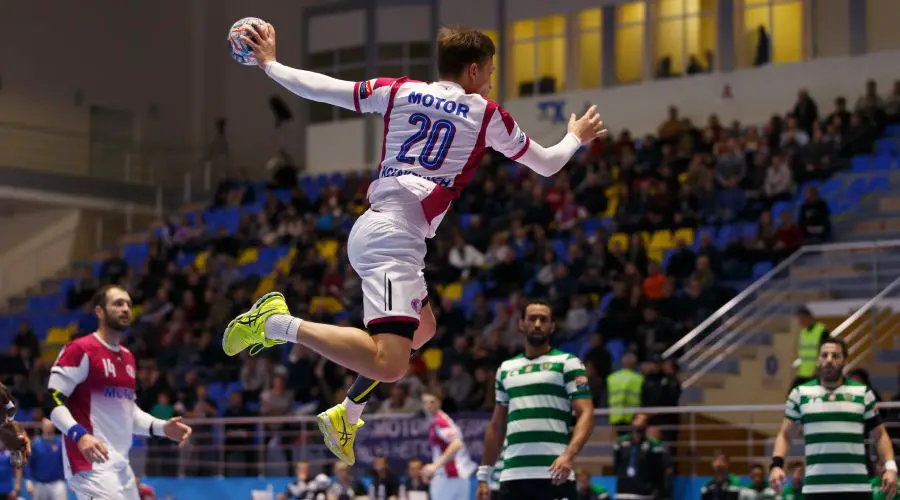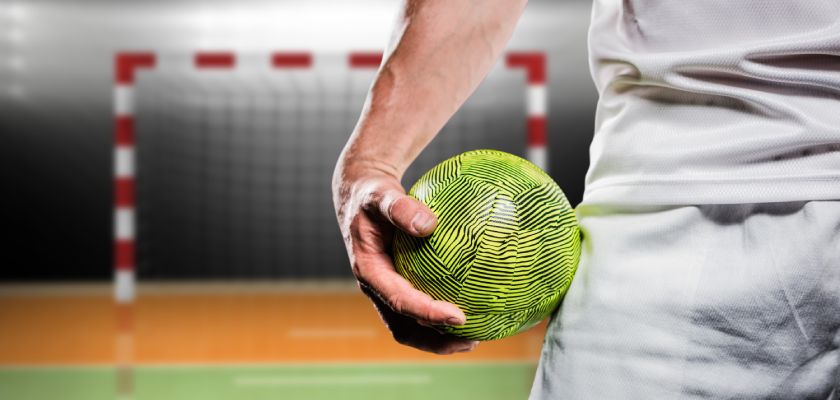Did you know that handball has different types of passes? Just like in basketball, soccer and other ball sports, there are different types of passes in handball.
This will be the main subject of today’s text, so stay tuned!
Participate in our free community on Whatsapp and receive daily tips, news and curiosities from more than 50 sports! Click here< to join.
Check it out 👇
Handball passes: the history of the sport
Modern handball comes from Germany at the end of the 19th century. In the mid-1890s, German teacher Karl Schelenz was looking for a way to keep his pupils occupied during the winter apart from soccer.
Thus, he created “torball”, a game that would be the embryo of handball, modifying some of the rules of field hockey and soccer;
However, Scandinavia was the epicenter of the development of handball as we know it today. Around 1910, the foundations for field handball, played in the air, were laid in Denmark and Sweden.

Around 1910, the foundations for field handball, played outdoors on grass pitches, were built in Denmark and Sweden.
This format quickly gained popularity and began to spread to other European countries.
Field handball underwent some significant changes during the 1920s. The change to an indoor game, played on closed courts, was the main one.
The change increased the speed and intensity of the game, making it more exciting for players and spectators.

When handball was included as a competition in the 1936 Summer Olympics in Berlin, it gained worldwide fame;
Fundamentals linked to passing in handball
Two other handball principles are closely linked to the pass: grip and catch.
Handball passing fundamentals: grip
Holding the ball properly with one hand is one of the most basic principles in handball.
For it to be done correctly, the palm of the hand is used to support the ball, while the fingertips press down on it.
Firm control of the grip is essential for an effective pass, as you need complete control of the ball to direct it towards a teammate.
Deficiencies can result in the ball slipping out of the player’s hands and, consequently, the attacking team losing possession.
Handball passing fundamentals: reception
After any pass in handball, the reception takes place. This principle is crucial for the team to continue building its attack.
Reception consists of receiving the ball and controlling it. It is usually done with both hands, although players of a high technical level can do it with just one.
For an efficient reception in handball, the hands must be aligned and slightly curved (shell-shaped). Normally, passes in handball are made at the height of the teammate’s chest.
It is in this position that the player will receive the ball to continue the attacking movement, be it with a new pass, a dribble or even an attempted shot.
Types of passes in handball
Passing in handball goes beyond simply exchanging the ball. They are at the heart of the game, of teamwork, synchronization and talent. There is a strategy behind each type of pass, and it also has a name. Let’s get to know them one by one now:
- Shoulder pass
- Pronation pass
- Pass behind the head
- Pass behind the body
- Bouncing pass
Handball passes: shoulder pass
The shoulder throw is one of the methods of distributing the ball in handball and is performed in a linear or curvilinear trajectory.
During its performance, the throwing gesture is reproduced, but at a reduced intensity.
This technique requires bending the throwing arm, with the palm of the hand facing in the direction of the trajectory and the fingers pointing upwards.
The leg positioned in front is opposite the arm used for the throw.
Some of the most common mistakes when making this type of pass are:
- Bend the elbow at the moment of release without fully extending it
- Keep your elbow below shoulder level
- Not making proper use of trunk rotation
- Position the advancing leg the same as the throwing arm
- Not flexing the wrist properly
Handball passes: pronation pass
The pronation pass in handball involves holding the ball with your palm facing downwards, while rotating your fist outwards.
In the case of the front pronation pass, you need to keep your elbow slightly bent and your torso leaning slightly forward.
During the execution of the pass, the arm is extended in the direction of the trajectory, with a pronation movement that aids momentum.
As for the lateral pronation pass, the distinction lies in the fact that the movement is made with the lateral projection of the executing arm.
Handball passes: pass behind the shoulder
The behind-the-head throw in handball can be performed either diagonally or laterally.
To ensure the precision of this movement, it is necessary for the torso to remain slightly tilted forward, with a slight shift to the opposite side of the arm used for the throw, which will be extended behind the body.
During this action, the player adjusts the position of the shoulders in the direction of the throw with an external rotation of the forearm.
Handball passes: pass behind the body
As the title suggests, this is the only one of the handball passes that involves throwing the ball behind the body. Similar to the pass behind the head, the pass behind the body can be performed diagonally or laterally.
Handball passes: bouncing or chopping pass
The bounce pass consists of throwing the ball towards the ground, allowing it to make contact with the ground before reaching the teammate. One advantage of the bounce pass is that, when executed correctly, it reduces the chances of an opponent interpreting it.
Explore beyond the world of handball! Discover our other materials too:



